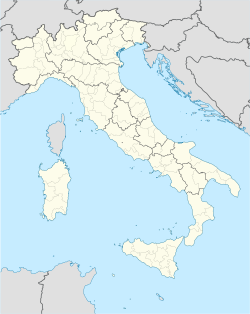Itala | |
|---|---|
| Comune di Itala | |
 view | |
 Location of the municipality of Itala within the metropolitan city of Messina | |
| Coordinates: 38°03′04″N15°26′13″E / 38.05111°N 15.43694°E | |
| Country | Italy |
| Region | Sicily |
| Metropolitan city | Messina |
| Frazioni | Borgo, Casaleddo, Croce, Mannello, Marina di Itala, Quartiere del Medico (Quartarello) |
| Government | |
| • Mayor | Daniele Laudini (lista civica Io amo Itala) |
| Elevation | 210 m (690 ft) |
| Population (30 June 2025) | |
• Total | 1,527 |
| Demonym | italesi |
| Time zone | UTC+1 (CET) |
| • Summer (DST) | UTC+2 (CEST) |
| Postal code | 98025 |
| ISTAT code | 083036 |
| Website | Official website |
Itala is a comune (municipality) of Messina in the Italian region Sicily. [1] and is 22 km from the centre of Messina. It was suppressed in 1928 and aggregated to Scaletta Zanclea, from which it regained autonomy in 1947.
Contents
- Physical Geography
- Origins of the Name
- Monuments and places of interest
- Religious architecture
- Civil architecture
- Nature Reserves
- Demographic evolution
- Foreign ethnicities and minorities
- References
- External links
Itala borders the following municipalities: Alì, Alì Terme, Fiumedinisi, Messina, Scaletta Zanclea.



